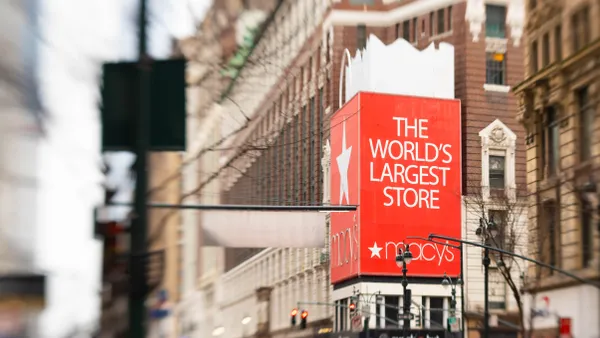Dive Brief:
- Reveal Mobile and Unacast have joined forces to help brands deploy beacons at a rate that warrants investment in the sensors and the retail apps they inform.
- More than 600,000 consumers use Reveal Mobile’s beacon-powered mobile apps, and Unacast PROX has 47 partners offering “proximity solutions” such as beacons.
- Shipments of new beacon equipment are growing fast, according to ABI Research released at NRF 2016, and many equipment providers have completed new funding rounds.
Dive Insight:
A new partnership between mobile audience insight platform Reveal Mobile and Unacast PROX, which helps retailers, brands and marketers leverage beacon and proximity data for online retargeting and attribution, may soon help merchants take better advantage of the one-to-one targeting that beacons have long promised.
With more than 600,000 consumers linked to its beacon-powered proximity data, Reveal will be able to offer improved retargeting to advertisers via Unacast PROX’s advertising partnerships. Armed with the information the partnership provides, retailers and brands will be able determine consumers’ locations, and retarget advertisements and offers to them based on that hyperlocal proximity data: For example, a retailer that knows a prospect is in the area thanks to the partners’ data could encourage that person to visit its nearest brick-and-mortar outlet.
The first Reveal/Unacast proximity retargeting campaigns are slated to go live during the second quarter of 2016.
Nearly 300 news and weather apps use the Reveal Mobile software development kit, detecting more than 2 million Bluetooth beacon signals each month. App publishers using Reveal Mobile’s audience targeting experience increases of 175-477% in advertising performance, as well as 50-200% increases in advertising revenue, the firm said.
Beacons in store can trigger push notifications to beam special offers or useful content to shoppers’ phones. Large retailers such as Macy’s and Target have tested beacons, but the sensors so far have failed to achieve the level of gee-whiz potential their futuristic-sounding function promises. With better penetration, however, they may be able to power more retail apps and help deliver sales—and manufacturers of the Bluetooth equipment are now scaling up to deliver more hardware.













